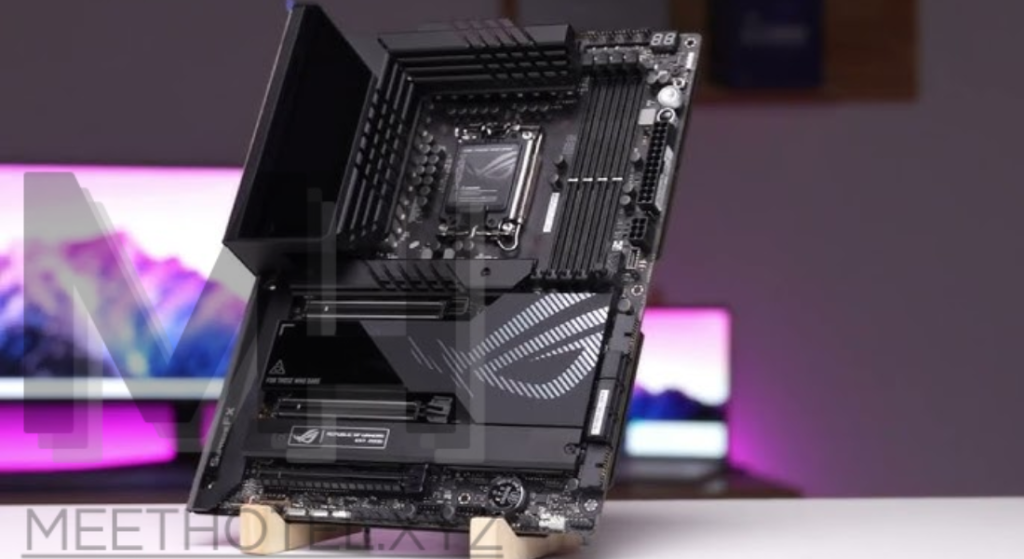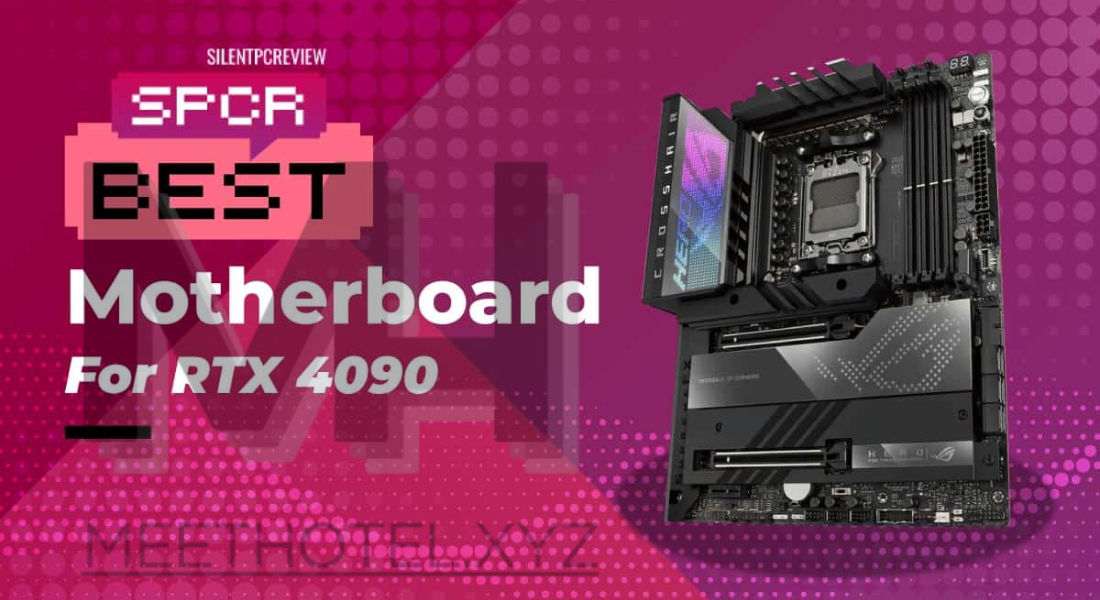The Nvidia RTX 4090 is a powerhouse of a graphics card, delivering exceptional gaming and rendering performance. Designed to cater to the most demanding workloads, it is ideal for gamers seeking ultra-high frame rates in 4K gaming or content creators working with complex 3D rendering, video editing, or AI-based applications. As gamers, content creators, and professionals flock to upgrade their systems, one crucial aspect of building a top-tier PC is ensuring compatibility between the RTX 4090 and the motherboard.
Compatibility isn’t just about ensuring the GPU fits into the PCIe slot; it encompasses power delivery, thermal management, and support for the card’s full bandwidth. Choosing the right motherboard for your RTX 4090 can significantly affect overall system performance, cooling efficiency, and the longevity of your setup. In this article, we will dive deep into RTX 4090 compatibility with motherboards. Covering everything from chipset requirements to specific motherboard features that maximize your GPU’s potential. Whether you’re building a gaming rig or a professional workstation, the details matter.
1. Understanding the RTX 4090: The Beast of the GPU World
Before discussing motherboard compatibility, let’s take a closer look at the RTX 4090 and what makes it a game-changer in the GPU market. As part of Nvidia’s Ada Lovelace architecture, the RTX 4090 delivers unprecedented advancements in performance and efficiency. It leverages cutting-edge technologies like DLSS 3.0, enabling AI-enhanced frame generation for smoother gameplay, and second-generation RT cores for more realistic ray tracing. Its raw power is unmatched, with 16,384 CUDA cores and 24GB of GDDR6X memory. Making it suitable for everything from immersive gaming to heavy computational tasks.
This immense power comes with some challenges. The RTX 4090 is built with a hefty power draw (450W TDP), requiring not only a robust power supply but also a motherboard capable of handling increased power delivery and thermal loads. Additionally, its large physical size demands careful consideration of case compatibility and PCIe slot clearance. These factors highlight why selecting the right motherboard is critical to unlocking the GPU’s full potential.
2. Key Factors for RTX 4090 Compatibility with Motherboards
When selecting a motherboard for your RTX 4090, there are several important factors to consider:
a. PCIe 4.0 or PCIe 5.0 Support
The RTX 4090 uses the PCIe 4.0 interface, and while it is backward compatible with PCIe 3.0, using a motherboard that supports PCIe 4.0 or PCIe 5.0 is essential for maximizing bandwidth. PCIe 4.0 offers a theoretical maximum throughput of 16GT/s, which is ideal for the RTX 4090’s data transfer needs. Although PCIe 5.0 is the latest standard, PCIe 4.0 is more than sufficient for current-generation GPUs.
Recommended Chipsets:
- Intel: Z590, Z690, Z790
- AMD: B550, X570, X670
b. Power Delivery and VRM Quality
The power delivery system of the motherboard is critical when pairing with high-performance GPUs like the RTX 4090. A robust VRM (Voltage Regulator Module) ensures stable power to the CPU and GPU, especially during intense gaming or rendering sessions. A motherboard with high-quality VRMs is necessary to avoid power throttling and ensure system stability under load.
c. Physical Space and GPU Clearance
The RTX 4090 is large, with some variants exceeding 14 inches in length and requiring substantial clearance inside the case. Be sure to choose a motherboard that offers enough room for the card, particularly if you are using an ATX or E-ATX form factor motherboard. Also, ensure that your case supports GPUs of this size to avoid interference with other components.
d. Cooling Considerations
The RTX 4090 generates significant heat, making cooling a priority when selecting a motherboard. Some motherboards come with advanced cooling solutions such as heat sinks on the VRMs, or the ability to support multiple high-performance fans and liquid cooling setups. Motherboards with good thermal management will help maintain optimal temperatures for both the CPU and GPU.
e. PCIe Slot Configuration
Motherboards typically have multiple PCIe slots, but not all of them are equal. For optimal performance, the RTX 4090 should be installed in the primary PCIe x16 slot to ensure it receives the maximum available bandwidth. Additionally, ensure that your motherboard has enough PCIe slots for any other expansion cards you may need.
3. Best Motherboards for RTX 4090 Compatibility
Now that we’ve covered the essential factors, let’s look at some of the best motherboards that offer exceptional RTX 4090 compatibility.
Intel Motherboards
- ASUS ROG Strix Z790-E Gaming WiFi
The ASUS ROG Strix Z790-E is an excellent choice for users looking to pair an Intel CPU with the RTX 4090. It supports PCIe 5.0, has top-tier power delivery, and is designed for high-performance builds. With robust cooling features and advanced networking options, this motherboard is built to handle the power demands of the RTX 4090. - MSI MEG Z690 GODLIKE
This motherboard is a dream for gamers and creators using Intel’s latest 12th and 13th Gen processors. With a 24+2 VRM configuration and support for PCIe 5.0, the MSI MEG Z690 GODLIKE offers incredible stability, making it ideal for the RTX 4090. Its massive I/O, ample storage options, and superior thermal design make it one of the best options available.
AMD Motherboards
- ASRock X570 Taichi
The ASRock X570 Taichi offers PCIe 4.0 support and a solid VRM setup to keep your system stable when paired with the RTX 4090. It’s a popular choice for users who want a reliable motherboard for high-end builds. The X570 chipset offers excellent overclocking capabilities and cooling, making it perfect for gamers and power users. - Gigabyte X670E AORUS XTREME
If you’re an AMD fan, the Gigabyte X670E AORUS XTREME is a fantastic option. It supports PCIe 5.0, boasts a 16-phase VRM, and comes with a comprehensive cooling solution to keep your RTX 4090 operating at peak performance. It’s designed for the latest Ryzen processors, offering future-proofing for your build.

4. Motherboard Features to Maximize RTX 4090 Performance
While the motherboard’s primary role is to ensure compatibility, certain features can enhance the performance and longevity of your RTX 4090 setup.
a. High-Speed RAM Compatibility
Ensure that the motherboard you choose supports high-speed memory, as the RTX 4090 thrives in a system with fast RAM. Look for motherboards that support DDR4-3600 or DDR5 memory for the best performance. Some motherboards even feature memory overclocking capabilities to get the most out of your RAM.
b. M.2 Slots for Fast Storage
As large as the RTX 4090 is, modern gaming and creative workloads require fast storage. Look for motherboards with multiple M.2 slots supporting PCIe Gen 4.0 for ultra-fast storage drives. Having fast storage is essential for reducing load times and ensuring smooth data handling during demanding tasks.
c. Networking and USB Ports
Motherboards that support high-speed networking (like 10Gb Ethernet or WiFi 6E) will provide faster data transfers and smoother online gaming experiences. USB 3.2 Gen 2×2 ports are also valuable for quick access to peripherals, such as external storage devices or VR headsets, which are often used alongside high-performance graphics cards like the RTX 4090.
5. Future-Proofing Your RTX 4090 Build
When building a PC with the RTX 4090, consider future-proofing your setup by selecting a motherboard that supports the latest technologies. While PCIe 5.0 may not currently be necessary for the RTX 4090, having it ensures that your motherboard will remain compatible with future high-bandwidth GPUs. Additionally, a motherboard with robust power delivery, multiple M.2 slots, and advanced cooling solutions will help extend the life of your PC build.
Conclusion
Choosing the right motherboard for your RTX 4090 is critical to ensuring optimal performance, stability, and future-proofing for your high-end PC. By focusing on key factors such as PCIe support, power delivery, cooling, and physical space, you can select a motherboard that will unlock the full potential of the RTX 4090. Whether you are building a gaming rig, content creation workstation, or professional setup, the right motherboard will provide the foundation for a powerful and reliable system.
